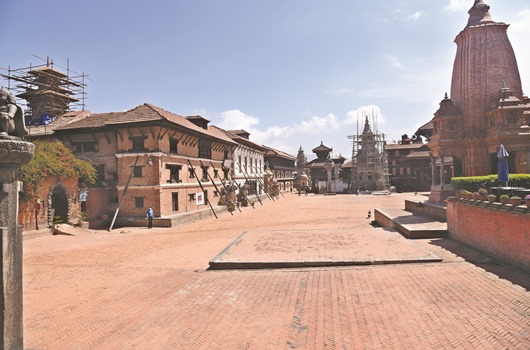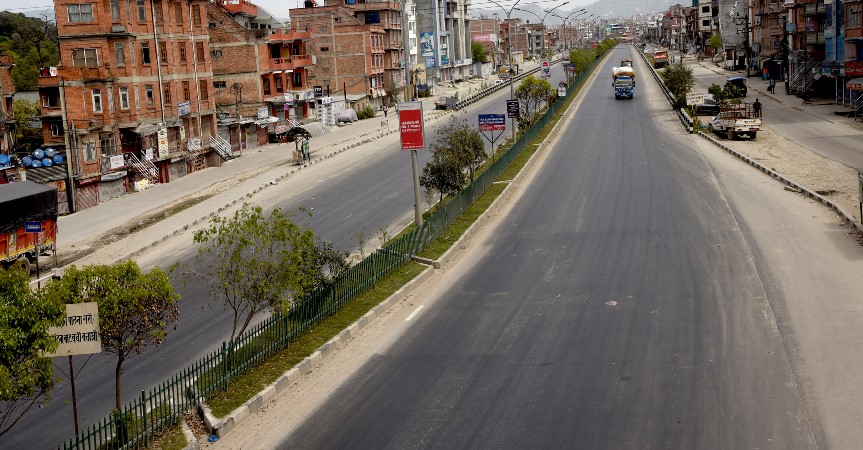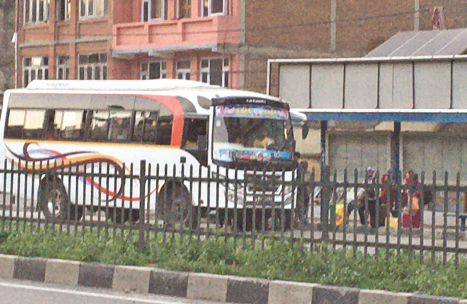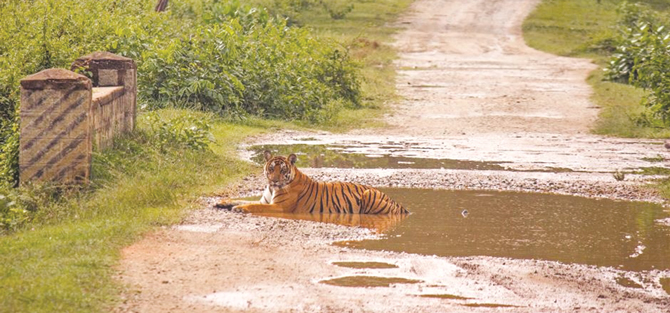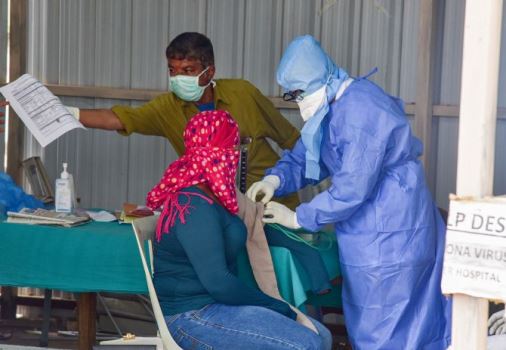Food chain management key to avert human-wildlife conflict

By Indira Aryal
Kathmandu, Apr. 11: Policeram Tharu is the latest victim of a tiger attack in Bardiya National Park (BNP). Tharu, 31, a mahout involved in rhino count, was attacked by the tiger at Gaidamachan, in the core area of the park, on April 4.
On March 16, Dalli Rawat, 55, of Thakurbaba Municipality in Bardiya got killed in the wild cat’s attack when she and three other women were collecting firewood in and around the BNP.
In another incident dated January 2, a speeding car driven by a 53-year-old man killed a tigress near Parsa National Park (PNP) on the Pathlaiya-Hetauda section of the East-West Highway. The car hit the beast while it was crossing the road, killing it on the spot.
Encroachment on wildlife habitats, lack of sufficient food (prey species) and threats the animals face from human beings are the main source of recurring conflict between the two, experts said.
Humans are not the primary prey for tigers. But when they feel scared by approaching humans or when they run into humans while moving around with their cubs, they attack humans in an attempt to defend themselves and their young ones.
Some incidents happening in and around BNP is unnatural, so there should be a focus on habitat management, including its enlargement for the dominant carnivores of nature, said Dr. Dinesh Neupane, wildlife expert and programme director at the Resource Himalaya Foundation.
Shyam Kumar Thapa, conservation officer at the National Trust for Nature Conservation (NTNC), says there is a clear link between top-down and bottom-up forces. "If there is plenty of quality food available, the population of prey can flourish, and once that happens, the hunter’s population (tiger in our case) can also flourish,” he said.
Thapa, who is doing his doctoral thesis on “Formation of grazing lawns in subtropical grasslands” in Wageningen University in the Netherlands, said, “When there are many hunters, they may limit the prey population through predation. Hunter and prey species are linked to water resources. When there are enough water resources, grassland becomes healthy, which in turn allows prey species to get enough food. Healthy prey species inside the protected area means that carnivores find enough of them there. So, it is correlated with everything,” he added.
When we look into the BNP, the level of Karnali River, which flows by the national park is shrinking every year, adversely affecting the health of the grass, upon which the prey species feed, he added.
Here is another reason for human-carnivores conflict:
Protected areas in Nepal and India are typically surrounded by buffer zones with marginal habitats and high human density. Younger tigers are often pushed out of the core areas of reserves into buffer zones by mature, resident tigers. Older and weaker male tigers are also driven from their territories by the dominant males. Both these younger and the older post-reproductive tigers living in marginal habitats are most likely to come into conflict with humans, said a research report on “Are conflict-causing tigers different? Another perspective for understanding human-tiger conflict in Chitwan National Park (CNP), Nepal”.
Thapa said that grassland management was the most important way to minimise the conflict. “One healthy tiger eats around 50 to 60 deer in a year. “So we have to look into the grassland and its quality for prey species inside the protected areas.”
At the same time, one of the major highways of the nation, the East-West Highway, runs through the BNP and PNP. The traffic movement along the highway that passes through the PNP, Chitwan National Park (CNP), Banke National Park (BANP), BNP and Shuklaphanta National Park (SNP) disturbs the wildlife there. What’s more, there are no speed breakers, crossing bridges and underpasses for wild animals, which could help protect animals from meeting with accidents, experts said.
According to Dr. Neupane, there has been no research on mitigation of conflict resulting from the growth in the number of wild animals. “We only talk about doubling the tiger population to meet the global target, but not about their habitat expansion and management. We never talk about human-animal conflict when planning to double the tiger’s population by 2022,” he said.
Bishnu Prasad Shrestha, chief conservation officer at BNP, said that there was no doubt that the tiger population had been increasing in the park but that none of the incidents occurred in the settlements area. “Ten people were killed in the park’s buffer zone and community forest area. This shows the tigers don’t like to get disturbed. Disturbances such as grazing, fire and firewood collection are causing problems in and around protected areas, so we have been conducting awareness programmes time and again to avoid such incidents," Shrestha said.
“Prey species are not a problem for carnivores inside the park, for there are more than enough. There are 95 such species in an area of one square kilometres there,” he said.
To manage the grassland and water resources, the park has also constructed 152 artificial ponds inside the park.
According to Tiger Census 2018, the country's tiger population has touched 235, with Bardiya alone hosting 67. The next census will be held in November 2021.
Recent News

Do not make expressions casting dout on election: EC
14 Apr, 2022
CM Bhatta says may New Year 2079 BS inspire positive thinking
14 Apr, 2022
Three new cases, 44 recoveries in 24 hours
14 Apr, 2022
689 climbers of 84 teams so far acquire permits for climbing various peaks this spring season
14 Apr, 2022
How the rising cost of living crisis is impacting Nepal
14 Apr, 2022
US military confirms an interstellar meteor collided with Earth
14 Apr, 2022
Valneva Covid vaccine approved for use in UK
14 Apr, 2022
Chair Prachanda highlights need of unity among Maoist, Communist forces
14 Apr, 2022
Ranbir Kapoor and Alia Bhatt: Bollywood toasts star couple on wedding
14 Apr, 2022
President Bhandari confers decorations (Photo Feature)
14 Apr, 2022




